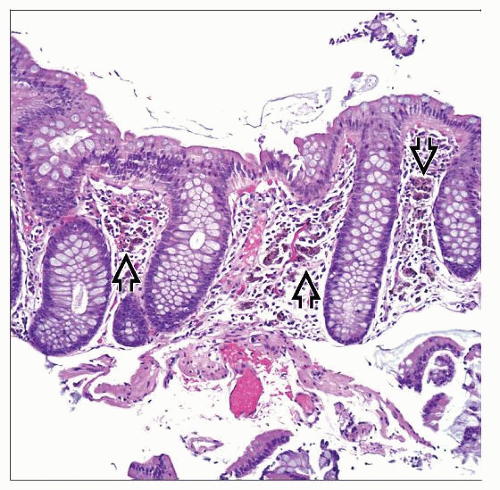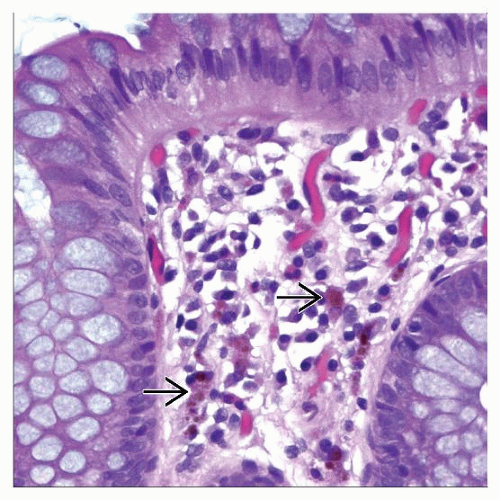Melanosis Coli
Sharon K. Bihlmeyer, MD
Key Facts
Terminology
Presence of melanin-like pigment in intestinal mucosa
Etiology/Pathogenesis
Close association with anthraquinone drugs including cascara sagrada, aloe, rhubarb, senna, and frangula
Pigment deposition secondary to increased apoptosis of many possible causes
Clinical Issues
Seen macroscopically in 0.5-5.3% of autopsies, but microscopically in 59.9%
Microscopic Pathology
Macrophages, singly and in small collections, contain brown-black globular pigment within lamina propria
PAS(+)
TERMINOLOGY
Synonyms
Lipofuscinosis coli
Pseudomelanosis coli
Definitions
Presence of melanin-like pigment in intestinal mucosa
Autofluorescent pigment containing melanin and glycoconjugates
Preferred name is “melanized ceroid”
ETIOLOGY/PATHOGENESIS
Environmental Exposure
Close association with anthraquinone drugs
Cascara sagrada
Aloe
Rhubarb
Senna
Frangula
Pigment derived from apoptotic epithelial cells (ceroid component) and anthranoids (melanic substance)
Stay updated, free articles. Join our Telegram channel

Full access? Get Clinical Tree






